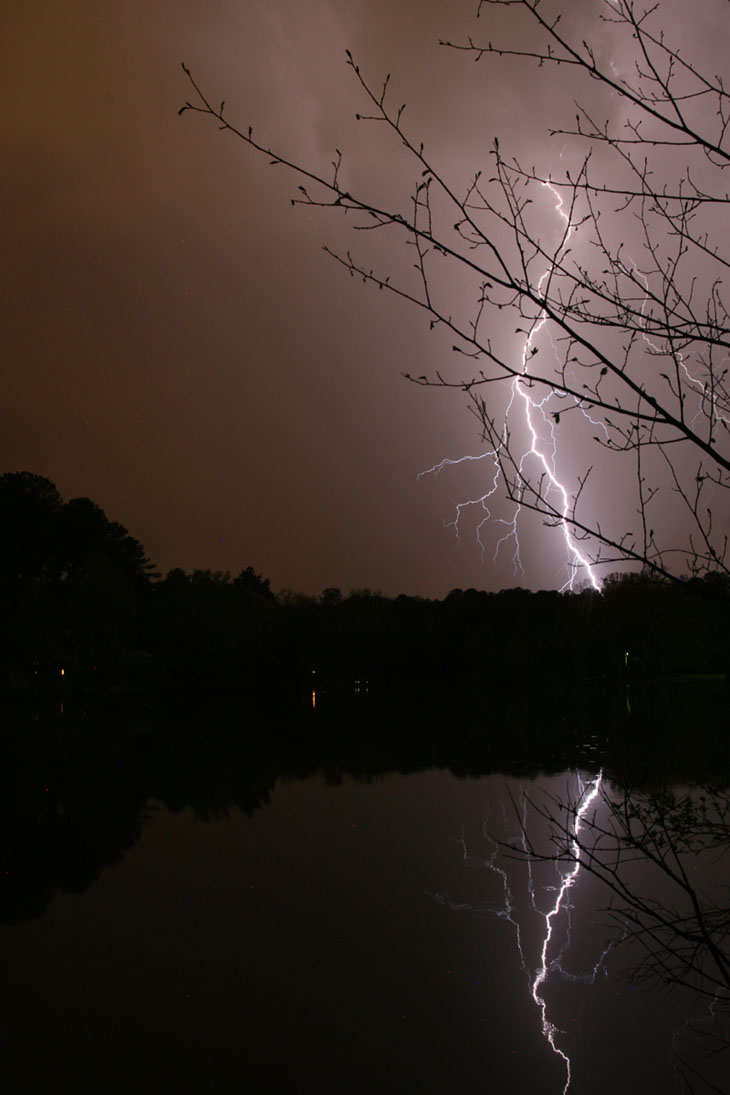
For years while living at the old place, I’d struggled with attempting to get lightning photos. The immediate surroundings were too cloaked by trees, poles, and wires, and I rarely got any kind of decent warning so I could travel to a more open and photogenic location. The electrically active parts of storms are notably fickle, usually only producing lightning for a short period of time and able to develop in unpredictable directions. So when we moved to the new place and had a pond not too far away, facing west (thus into most prevailing storms,) I was pretty psyched. Not to mention that I now had access to a lightning tracking website, so a little more warning.
The shot above, from 2015, came not 24 hours after successfully capturing a storm well south down on Jordan Lake, and after a sunset storm that was too bright to allow time exposures – just a busy period for thundercells. I took a chance with shooting vertically and including the tree branches and a portion of the pond for a reflection, and the storm obliged nicely, far more cooperative than any that I’d chased for years before. I mean, sure, it could have been a bit more to the left, but being among the branches worked pretty well.
And then I recropped the image to use just the reflection.

Very little wind to disturb the water’s surface, and just a few raindrops as the front moved in. There are just enough ripples to say, “Reflection,” but not so many that the reflection becomes scattered and obscured; I really couldn’t ask for more. The full frame version at top has adorned the wall over my desk at Walkabout Studios for several years now.
I can’t recall for sure if it was this one, but one of the storms that I chased (okay, stood and waited for) developed into a wicked downpour, and even though the pond is less than three hundred meters in length, I heard the rain approaching across its surface, a rapidly-growing hiss that gave only seconds of warning. I am routinely prepared, however, and had the disposable rain poncho out and over myself and the camera bag before the drenching could take place, not to mention that the bag itself is heavily treated with waterproofing spray. This is never 100% effective, however, and so as a tip, I’ll say that you always get out of the rain as soon as possible, then remove all equipment from the bag and let it all dry thoroughly for several hours – moisture in the fabric of the bag can get driven into photo equipment very easily, and that’s bad news.




















































